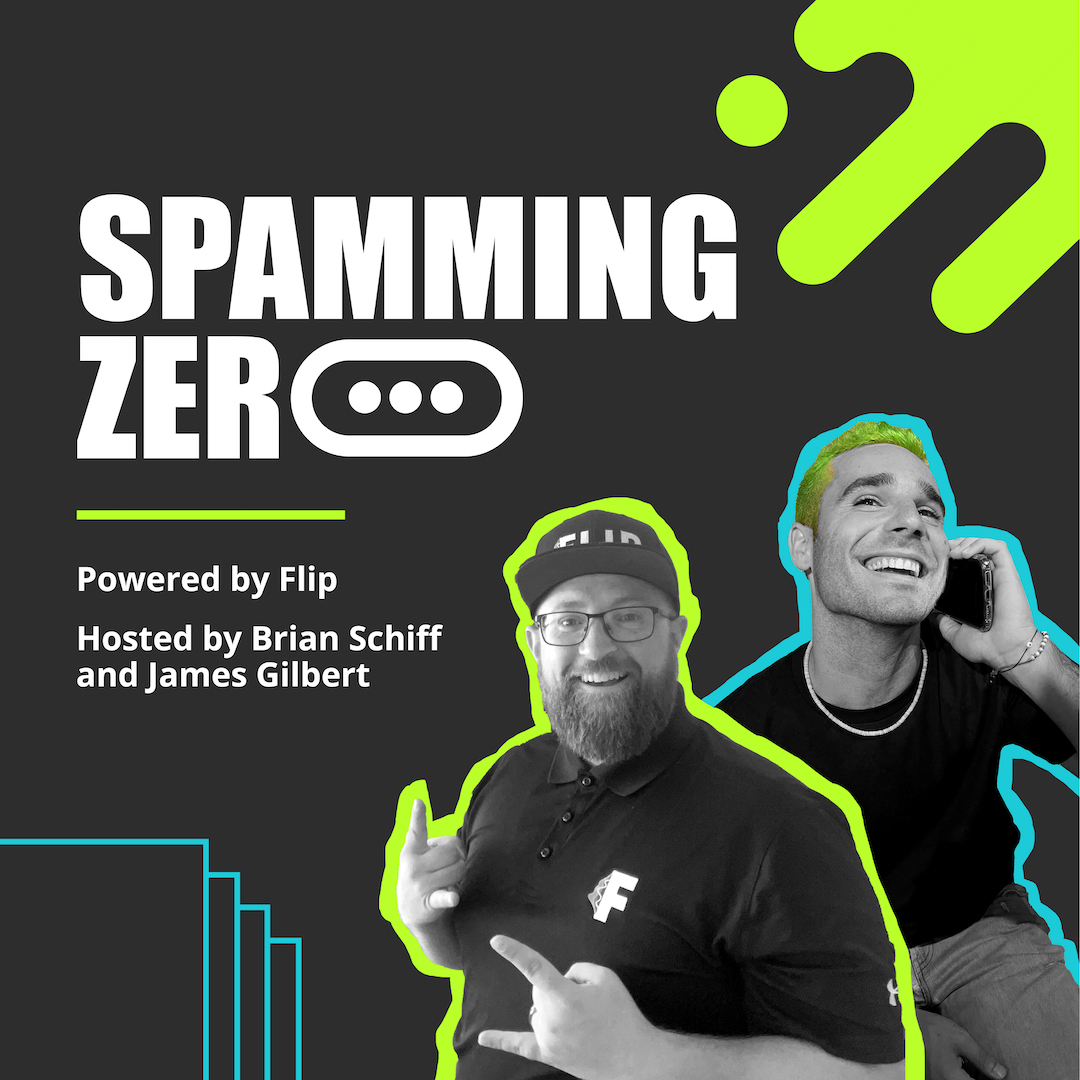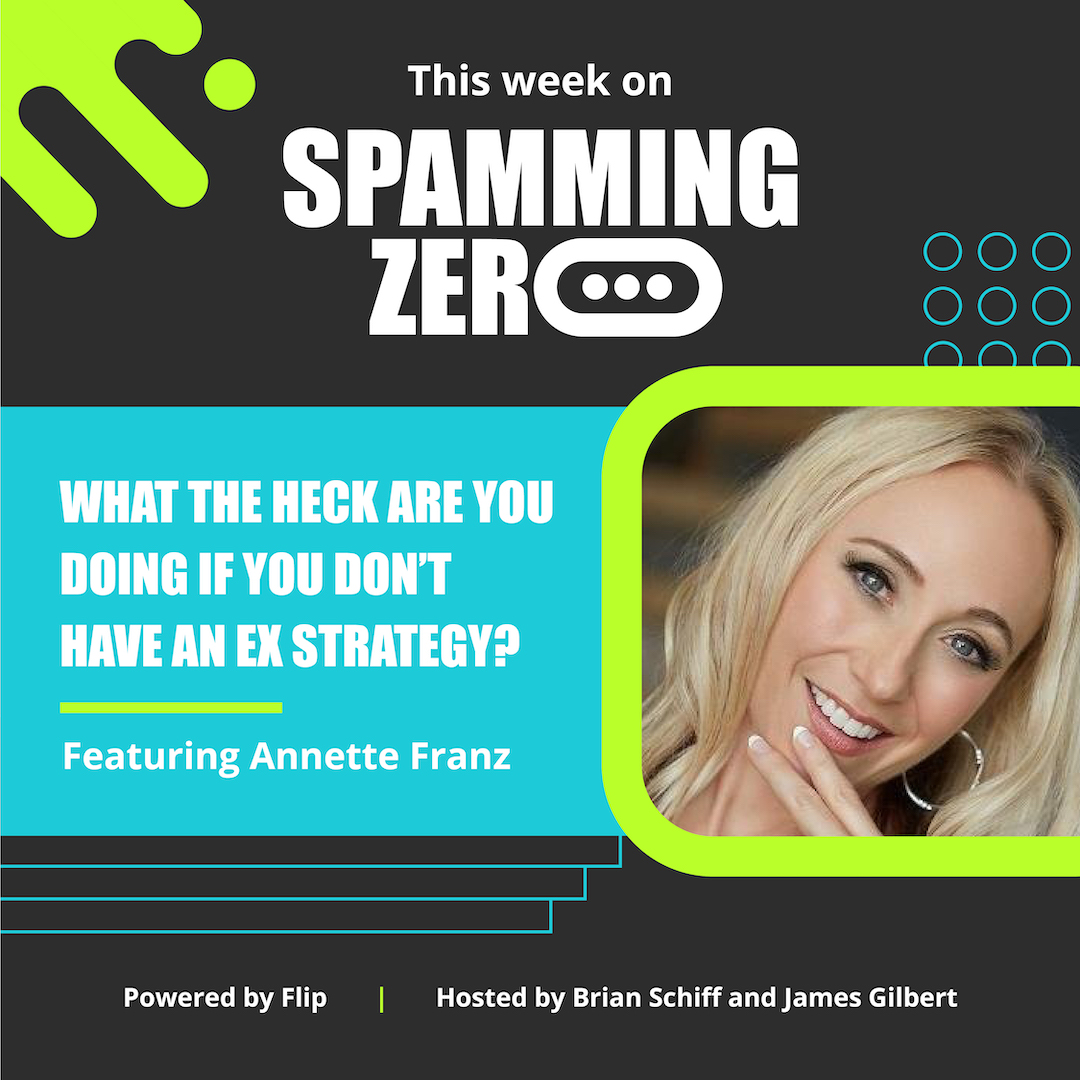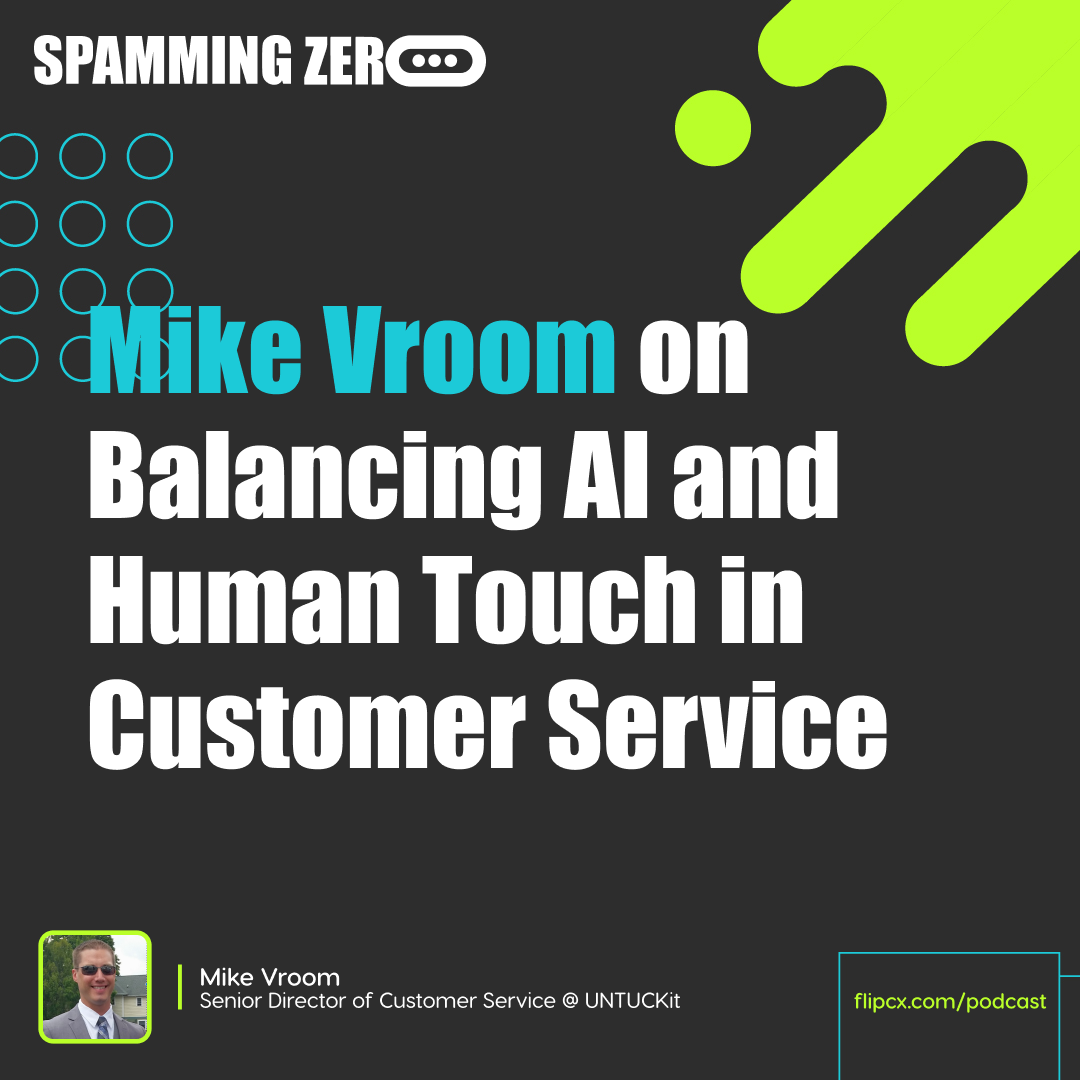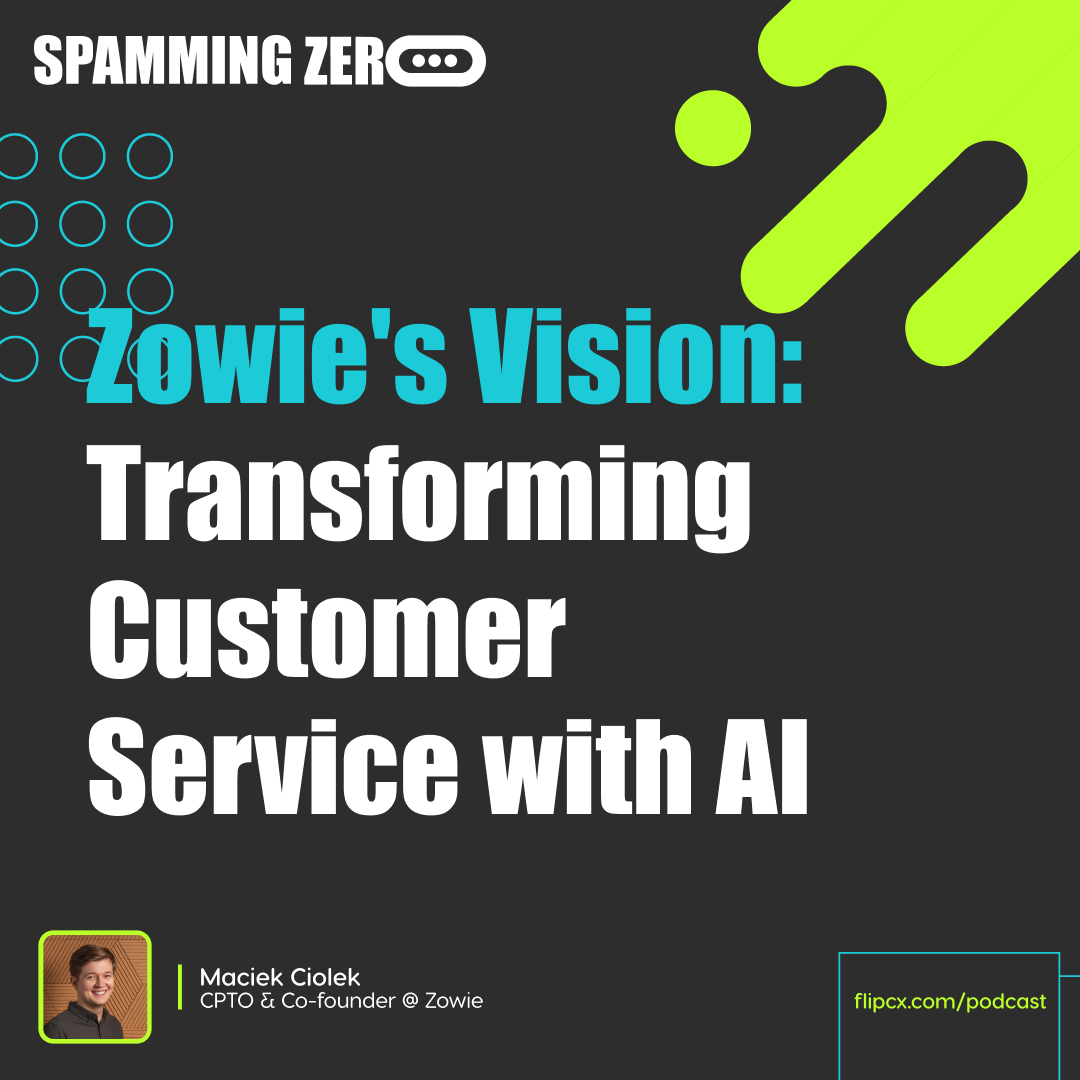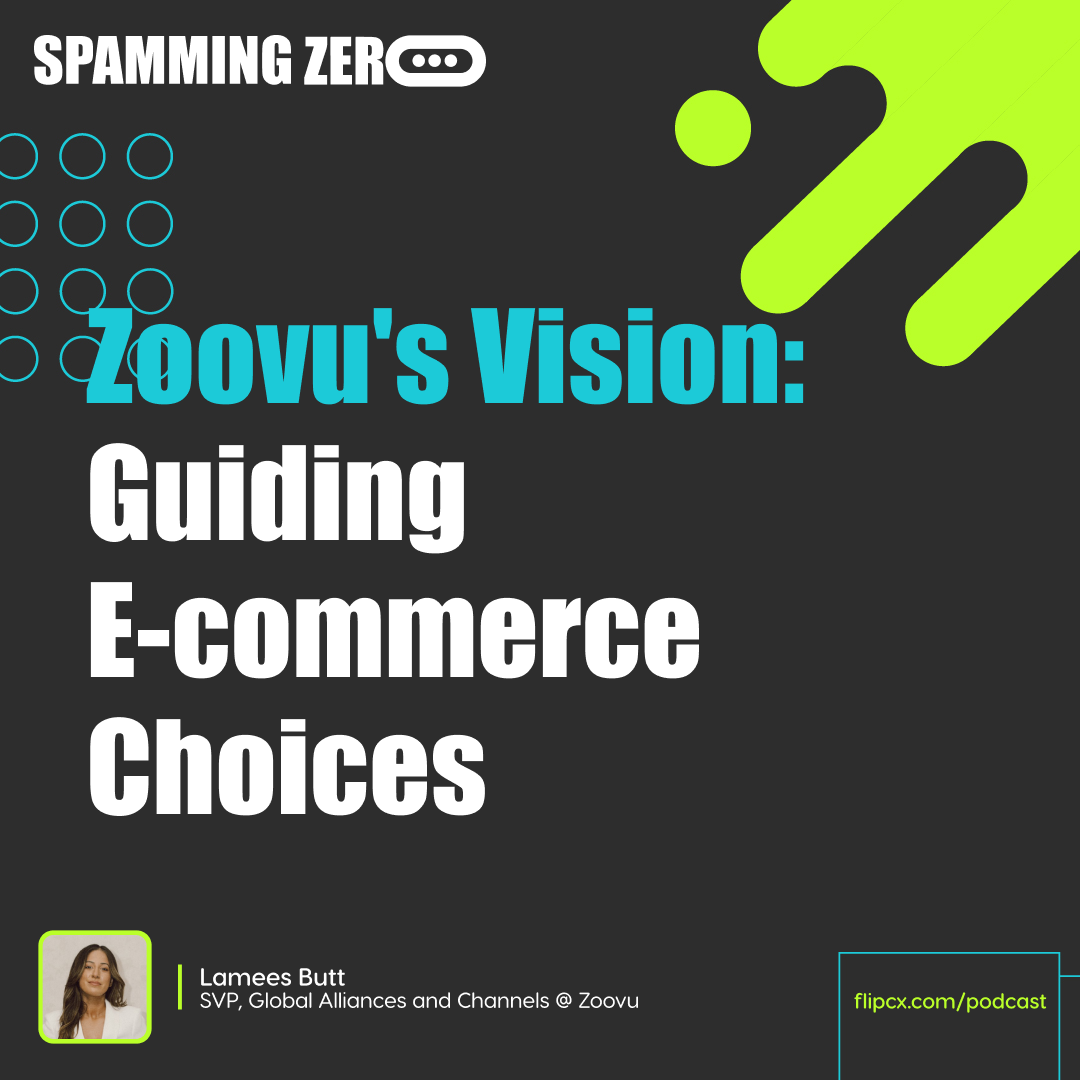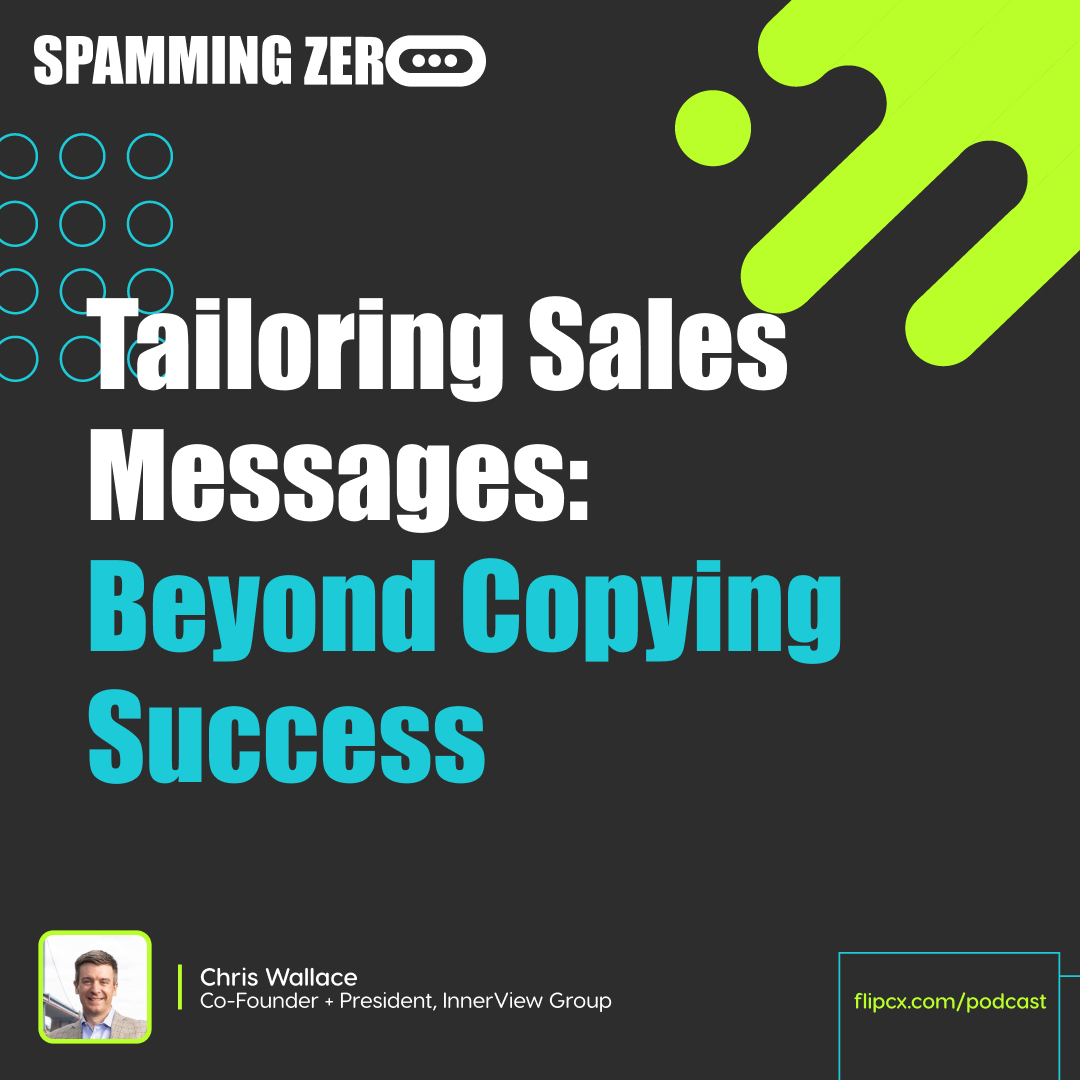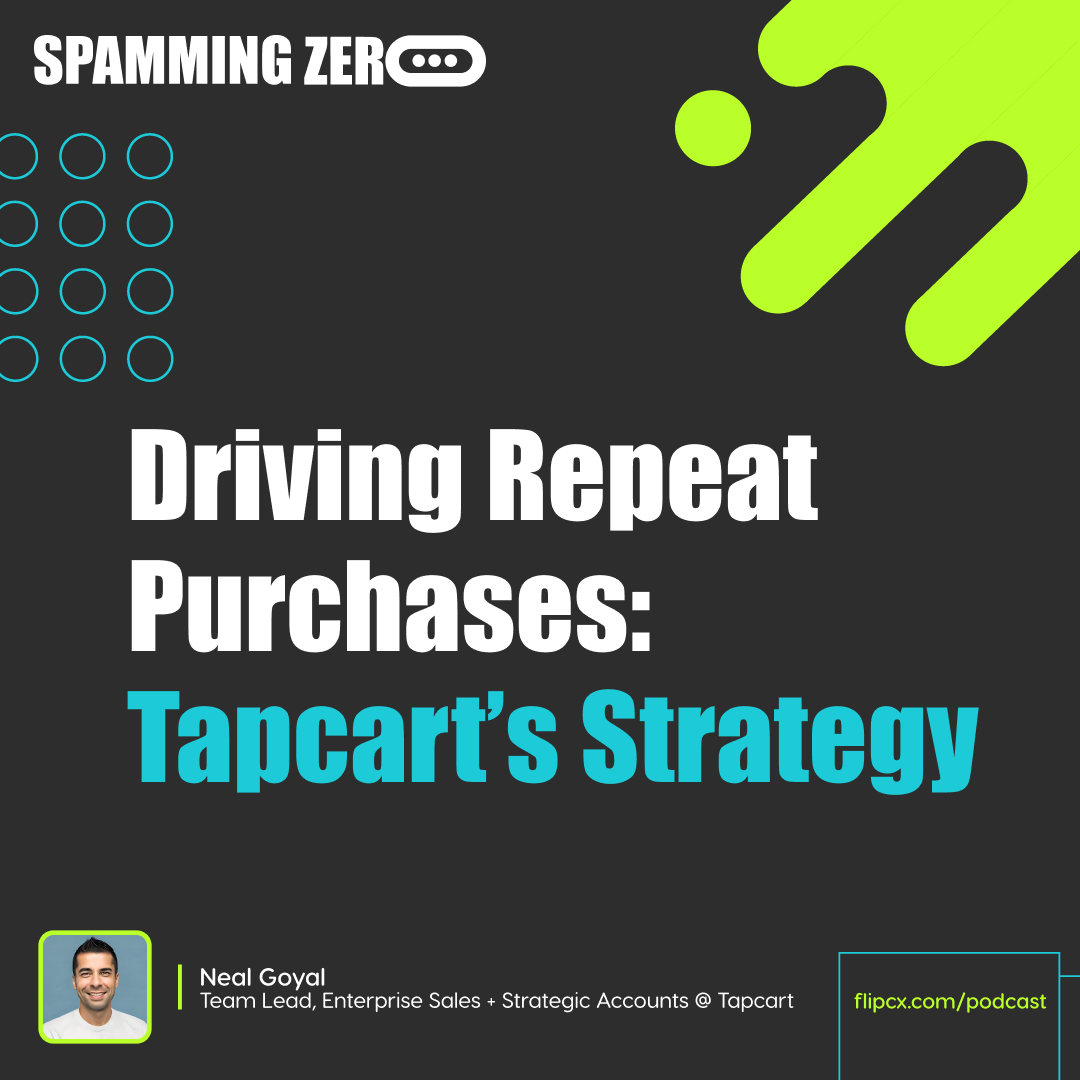Episode 13: What The Heck Are You Doing If You Don’t Have An EX Strategy?
- 0.5
- 1
- 1.25
- 1.5
- 1.75
- 2
James: I'm James.
Brian: And I'm Brian.
James: And this is Spamming Zero. Welcome to the show, everybody. Annette, welcome to the show. Brian, welcome to the show.
Brian: Thanks, James. Thank you, Annette.
Annette: Thanks for having me.
James: This is an edgy topic. I kind of gave Annette two different options of titles, but we're just going to go with the one that is the most edgy because I feel like it's really needs to be said, and that's the what the heck are you doing if you don't have an employee experience strategy. So, that's what we're going to talk about today. Before we do, Annette, tell us about an experience that has left you vivid memories in your life.
Annette: Well, let's see. I grew up on a farm in Ohio in the middle of nowhere. I could share a lot of experiences with you.
James: Come on, let's do it.
Annette: All right. Have you ever castrated lambs before? Have you? Have you ever helped burn baby animals before? I mean, those are pretty vivid experiences.
James: So, I can relate to you. I used to work on a dairy farm. So, you know what that's like.
Annette: I know what that's like, yeah, absolutely.
Brian: I went to school near a bunch of farms. That's about the closest I got.
Annette: Close enough, right?
James: It's the smell that does it, right? It just permanently stains your clothes with the smell. So, for all my fellow farmers out there, I feel for you.
Annette: Well, I think after a while, you kind of get nose blind.
James: Okay. Now, let's talk about the topic at hand. You have written so many books.
Annette: Just two.
James: Just two, but still. Okay, but these two are pretty amazing, but I'd love for you to dive into a little bit of what inspired you to write them first of all, and then I'd love for you to kind of give your take on why employee experience is often overlooked.
Annette: That's the$ 64,000 question, right? Let's start with the easy stuff. So, two books, Customer Understanding and Built to Win, Customer Understanding was one of those, it really sort of is a summation of my life's work, and my life is nowhere near over, but up until that point, really, I had started my career 30 years ago at J. D. Power and Associates and market research, and then voice of the customer platforms. It really was a culmination of the work that I had been doing over the last 20, 25 years once when I wrote the book, and it is really about all the different ways that we make sure that we understand our customers, and it's not just about listening. It's about the three ways listening, characterizing just personas, and then empathizing which is journey mapping. So, I had been talking, it was really interesting because as I was going to write that first book, it was actually going to be a totally different book, and I was speaking at an event, and I walked off the stage, and I had just done this whole presentation on customer understanding in these three ways, and the reception was amazing. I walked off the stage and I was like," That's my book." And on the flight back home, I was in New York, on the flight back home for five, six hours, I was transcribing, taking my notes out of the presentation, putting them in a Word doc. I think it just really is important that it's not just about surveys, right? There's so many other ways that we understand our customers and then we really need to do something with that. So, that was the first one. The second one, I sort of had a similar path to it. I had been talking a lot about the foundational principles of a customer- centric organization and I was hearing a lot... So, really sort of two things drove me. I was hearing a lot that I don't think people really understand what it means to be customer- centric, right? Oh, I sent a customer- centric message. Oh, I have a customer- centric employee, but customer centricity really flows through the veins of the organization, right? It is the DNA of the organization, and it's so much more than just somebody wanting to help the person in front of them or a message that is really it's customer- focused, not customer- centric, right? So, that was the first part of it, and then the second part was really to inspire leaders to think differently about culture and about a customer- centric culture and what that takes. But I got to that point of writing that book too because over the couple of years prior to that, I'd been presenting around these foundational elements, and again, it resonated with folks. Everybody loved the topic and I was like," All right, this is my next book." So, yeah.
James: I got to unpack this a little bit. Would you dare reveal on this podcast what was the original idea of the book?
Annette: Oh, interesting. So, I had started writing a book probably four or five years prior to that, and it was purely on journey mapping. That was it. It was going to be a book about journey mapping. That was it, and I was not excited about just writing a book about journey mapping, even though we could talk and write about that for forever, and I do dedicate a good chunk of customer understanding to journey mapping. I just didn't feel like that was going to be the thing that was going to be my first topic of a book.
James: Well, I will say when I got introduced to who you were back in, I think it was 2014 you were introduced to me as the journey mapping queen. So, for what it's worth, you have a very strong presence in that area.
Annette: That I do. That I do.
James: So, kudos to you for that. There's a ton of value when it comes to this idea of customer centricity, but I think in order to activate that, you have to have really employee centricity. So, let's unpack this a little bit. I want you to dive in here too, Brian as a CEO because you get a first take at this too at a startup. Culture is crucial. So, why do you especially feel like it's so important right now? I mean, we're going through a dip right now in the market. So, this is my question to both of you, Brian, as a CEO, why is it important right now to focus on those things? And Annette, from your perspective, how you have so much consulting experience with businesses that are doing this stuff and helping them get it up and running, how can it be the deciding factor if they make it out of this potential recession?
Brian: For me, right, coming from my experience and what we're trying to accomplish as an organization and scaling the business, the strongest motivation in a lot of ways can be the basic fact that when you are really small, when you're a couple of founders starting a business, you and your co- founders produce a hundred percent of the work that the business produces. And then as the team and the company grows, you as a couple of individuals produce a smaller and smaller percent of the total work that the business is producing, and then the question becomes, right... So, the very obvious first step from there is okay, the people that you're bringing into the business are incredibly important and they're the ones that are really going to be the deciding factor, and then that thing that goes hand in hand with it is the environment that you're putting those people into, and the culture, and the way in which they're working together, and the tempo with which the team moves, and the things that are prioritized, and the way decisions are made, and all of that stuff. Those are the things that I, as a founder and as a CEO, can influence to impact all of the work that's getting done as I myself do a smaller and smaller percentage of it.
Annette: I think that calling out the environment, calling out the culture, and calling out how we hire people that fit that culture, I think is a really important part of it, and it is really the foundation of that employee experience too, right? If you hire, and I know culture fit is such a... It's a topic that people either... or they're like," Yeah, it's exactly what we need." I think it's misunderstood too because culture fit isn't about everybody being the same and homogenous and thinking the same and doing the same. It's really that if you think about what culture, culture is core values plus behaviors. Well, hiring for culture fit means that the people you hire are aligned with your core values, and I think I even say it in the book, I say," Wouldn't you want to surround yourself with people who have the same core values as you do?" I mean, both in your personal life and in your professional life, doesn't that just make sense? But that doesn't mean that you all look the same and do the same and think the same. It's just that you have the same wants and values, and you align there. So, I think that's a really important foundation to a great employee experience, and you have to define those core values, and then you have to define the behaviors that are aligned and associated with those core values, and then socialize and operationalize all that so that employees really understand what those core values mean and what it means when I'm interacting with you, or when I'm interacting with a customer, or when I'm interacting with colleagues, whatever it is. So, such an important thing that you said there is that the environment that they come into is huge when it comes to the employee experience.
Brian: The worst examples of culture are when it's a couple of people at the top of the organization that are ringing a bell and holding up a flag, and then it's just lip service and you get a bunch of eye rolls and people just kind of ignore it and move on with their day. You really need champions of the culture internally, and the culture needs to really become something that everybody feels like they own and feels like they are giving feedback around, both positive feedback and negative feedback.
Annette: Agreed. You get the culture you design or the one you allow, and I believe that the CEO designs the culture, but employees are involved and they're the ones that take it and there's this grassroots groundswell, right? They're the ones that then just take it and evolve it into what it becomes, but within sort of those guide rails, again, of core values plus behaviors, and it's really up to the leadership team to model the behaviors, reinforce, recognize, and just make sure that we do have those rails there. I mean, it doesn't become how we do things around here or how people behave or how people act when no one is looking without that, right? I think that's a really important piece.
James: Let's unpack the second part of my question a little bit more, and that's this idea of I dip in the recession a little bit. I truly think that one of the secret sauces to businesses right now is a focus in this area, the employee experience, and I want to unpack it in a really granular way. So, I think too often culture and employee experience is lumped into things like giving away snacks at an office or lunches, or you name it. You guys are both smiling and nodding your head because you know that that is true. Like," Oh, we're going to do this one little thing so then we can check the box of employee experience." Right? I also think that there is an unfortunate notion, and this is where it gets a little bit more edgy, is I've talked to a lot of people that have... They're what I would call the experts when it comes to D& I, right, and things like that, and what's interesting to me is how that has now become very similar to these office perks. It's a checkbox. So, I want to unpack this at a really granular level of what is really the employee experience.
Annette: So, here's my definition, and it's similar to my definition of customer experience, but I add onto it, right, in more detail. So, the way that I define employee experiences, it's the sum of all the interactions that an employee has with her employer over the duration of her employment, and also the actions and the capabilities that enable her to do her job, plus the feelings, the emotions, and the perceptions about all of that, right? Now, when I talk about actions and capabilities, I'm talking about what I call the hard stuff and the soft stuff, but the soft stuff to me is leadership cares about employees, there's career pathing and career development and growth opportunities, and there's coaching and feedback, and employees feel empowered, and we're concerned about their wellness and their wellbeing, and they know how they impact the business, they know how they contribute. That's to me is sort of the soft stuff. And then the hard stuff is that they have the tools, the training, the processes aren't broken, the policies aren't outdated, they have what they need to do their jobs and to do them well. I always share a quote when I talk about that hard stuff. I always share a quote from an employee that I interviewed years ago, and when I first start working with a client, I'll interview the executive team, some employees, and some customers because I just want to get a sort of a baseline assessment of what folks are saying or what they're experiencing. And this one employee said," We don't have the tools or the resources. Our policies are outdated. Our processes are broken. We don't have what we need," and this is the important part," to serve our customers the way they deserve to be served." And it's like, you can't say it any better than that. If somebody questions the connection between the employee experience and the customer experience, it's right there, coming out of the mouths of babes, right, and that's really important. So, that's my definition of employee experience. I think that's it's detail, but I think it's really important to think about both the soft stuff and the hard stuff.
James: I think about the contact center folks and the agents. I mean, it is the toughest job, I think probably one of the toughest jobs that you could have. People are calling in upset, and I know we talk about this a lot on the podcast, but I do think it's true, and you bring up a really good point, and that's empowering your employees to whether it's leverage technology or be more efficient in their jobs, and I think that in a lot of cases, we just don't have it operationalized in a way that does that really well. What's your advice to those that are just either way far behind, or they're starting to just even think about this and they haven't operationalized in anything? What's your advice to them?
Annette: Get started. That's number one, get started. It's funny because I've been talking about, when I started my career 30 years ago, we were talking about the customer satisfaction and customer loyalty, and I was saying," Hey, we need to listen to employees too," and our clients would say," We'll do that later. We'll focus on customers now, but we'll listen to employees later." And it's like, well, it's later. It's happening here. It's later. So, get started if you haven't gotten started, get started. But I think the first place that you need to start is your culture because again, that's the foundation, and that's the foundation of ultimately of the employee experience too. It's certainly going to drive a lot of that. And so, get those core values in place, and get the behaviors defined, and start to socialize and operationalize that. Beyond that, for the employees specifically, again, higher culture fit. I think that's going to be huge, and then you've got to do the same things that you do for customers and the customer experience. You have to listen to your employees, however you get feedback from them, and do something with it because I have a client that I worked with a few years back, and they were being surveyed quarterly, which I would not do because you're not just not going to be able to affect change from feedback every quarter, right, and there were employees who actually told me," I kept my feedback," because there were a lot of comments." Oh yeah, I just kept my comments from last quarter in a Word doc, and I would just copy and paste them into this quarter." Just this-
Brian: Oh god.
Annette: Yeah, right? And that's how bad it is, right? So, listen. Do it at a right cadence. It may not be surveys. It might be employee round tables and employee tours, whatever, go out and sit and talk to employees, have your one on ones and bring that feedback from your employees together to really figure out what the experience is like today. I mean, there's a lot of ways to do that, but you also need to develop personas so you know who your employees are. There's different roles. I get it. But there's different types of people and different, just like with customers, jobs to be done. Why am I here? Why am I excited to be a part of this company? What am I hoping to achieve on here? And then journey mapping too. You need to map the employee experience as well and use everything you learn and do something with it. I mean, that's a lot. I know you said where do they start, but that's a lot, right? But it's the exact same process we go through with a customer experience strategy for the employee experience strategy.
Brian: I love how you said the... Your instinctual reaction to the question was just get started, right? Start somewhere. And there's so much of breaking the inertia. You look at something that is so big and in some ways like so vague, and oh, there's these other priorities, and we got to hit numbers, and this, that, and the other, there's fires inside the business. It's like do something. I personally, as a leader, very early in our journey of kind of building up a team, there's this oppositional point almost around focus is the most important asset of a startup, right? You're a small team with big goals, and it's all about focus, align on the two or three things that need to happen, and only do those things basically. But then what that led me into was this world where all of these small things that people wanted, right, little side thing they want to do here and there, little nice thing they want to do for somebody else on the team, this, that, and the other. It was always no, no, no, no, no. And it was always underneath this idea of having the focus, and over time, I have, and I give a lot of credit to my co- founder Jacob for this one for repeated kind of nudges or kicks or whatever you want to call it into the right direction, but it's so easy to start on so many of these things. A lot of times there are people inside the organization that are passionate about these things. You talk about having champions of the culture and all of that stuff, one of the best things for employee experience is to have people working on things that they want to be working on and to feel like they are empowered and the organization is creating a tailwind behind them rather than a headwind in front of them. But also, so many of these things are so small and it's like, I don't need to do it, right.? It's something that they want to do, and is it really going to take away from the priority. So, I think that there's so much of let people own it, let people get the ball moving in the right direction, let people go and do small things, and get the whole thing, break the inertia and get moving.
Annette: Everything that you said I agree with, and that is why culture is so important because if you have that culture established in your organization, your employees should feel free to do the things that you just said. Hey, I'm passionate about really understanding the place and doing that work, I'm raising my hand, how can I get started, who's with me, that kind of thing. So, that's really, really important. Again, it's about the culture and I laugh when you say you always have to hit the numbers and there's other fires and other priorities and stuff. And I'm like," What's more important thing your people?" Because the way that I always sum it up is that if you don't have employees and if you don't have a great employee experience... I mean, your employees are the ones who are designing the product, they're building the product, they're selling the product, they're servicing the product, they're doing all these things, right? So, there can be no other priority. They are the priority because then they're going to deliver, and they're going to perform, and they're going to... All the things, right?
James: You know what's interesting is I've had an opportunity to consult a few different startups in my career. I've always found it interesting in seed or series A, even I think through series B and C this often happens, is how little culture is documented. I count myself a little bit lucky because in my last role, I was able to help build culture that didn't exist, right? Document it, and then activate it, and I think one of the most foundational things that I have found to be very, very effective is creating your culture pillars, so to speak, where you have these guiding principles that you live by. They can change. They can completely go away for all that that matters, right? But having this documented and on paper and as one of the first things that gets in the hands of a new employee during their onboarding, these are principles in which we guide ourselves by.
Brian: And this is the just get started, right? If you can change it and you can evolve it next week or next month or next year, then it's like put a deadline on it, get the people in the room that need to be in the room, make a decision, and then reevaluate it as time goes on.
James: And for the record, sometimes you may not be able to get total buy off across all functions. So, here's something else you can do, right? I don't ever like to encourage a siloed approach, but sometimes it just requires you to act to then get buy off. So, here's something that I did. I created what I called our marketing vision. Brian has seen this because I've done this here, and he's seen actually something that I've done similar here at RedRoute, but it's a marketing vision, and it's sort of the mottos that we live by. One of them is don't do anything unless you've looked through three lenses, the one who buys, the one who sells, and the one who keeps the customer happy. That means that your counterpart has to be sales, and your second counterpart has to be customer success and service in order to do marketing well. So, that's a motto that we live by. So, came up with this vision in a prior role, and that's actually what helped us come up with culture pillars that could be standard across multiple functions, right? How do we maintain a customer- centric culture and an employee- first culture? Well, give recognition for when it is deserved. Let's say you led something, and it had participation from 1%, just 1% of somebody else on the team, always give the 1% recognition first. And it's those guiding principles that I really think can help activate a culture internally. I know, Annette, that you have dealt with this way longer than I have, and you're in the thick of it with many organizations. What are your thoughts on that?
Annette: No, you just gave a real life example, and I totally agree with you. Absolutely.
Brian: We talk a lot about wow moments and we talk about them all the time with customers in the customer experience, and one of the things that James and I were talking about just a week or so ago was the idea that if you create wow moments for your employees, then they will create wow moments for your customers, right? You inspire that sort of creative thinking and that sort of motivation and valuing it. As you've looked at as many organizations as you have over the years, what really jumps out as wow, they did it amazingly well and also incredibly different from what you're seeing at the typical company?
Annette: Sadly have to say that for me personally, I haven't had any of those wow moments. I would like to know where those companies are, right?
Brian: Mm.
Annette: But I will say this is that... Not good wow anyways. More like holy( beep) wow or WTF wow. Yeah.
Brian: Yeah.
Annette: But here's what I would say. If you're trying to figure out what that is or what that looks like, talk to your employees because wow is different for different people, right? It's different for different cultures. It's different for different employees. It's different for different age groups. It's different for all of those things. So, really, what is wow to one person may not have the same impact on another. That'll be maybe be a little controversial here on this whole notion of wow because yes, we need to delight our people, whether it's our employees or our customers, but I don't think that that's really what our employees or our customers expect. I think there's sort of this, just this standard that if we can deliver this expectation right here, this standard expectation, that would be amazing, and I got to tell you, many companies don't hit that. So, can we just do this and not worry so much about getting up here I think is what I'm saying, and what is the gain? If we go from here to here, what's the gain? What's the effort and what's the gain? What's the impact, right? And is it really worth it? I think that's an important consideration. Number one, talk to your employees, figure out what motivates them. The same things don't motivate me as motivate you. And then second of all, figure out is it really necessary to go that extra mile, or can you just go the mile and meet that, meet me here which doesn't happen very often.
James: I have a suggestion for all of our listeners out there. If you have people that are reporting into you... So, you're a people manager at any level, C- level, VP level, director level, manager level, I don't care what it is. Go try this, carve out some time over the next two weeks to talk to each one of your employees and ask them a couple of questions in a one- on- one, and have it be a totally different one- on- one. This one- on- one, have it be a hundred percent about them, not their performance, about them as an individual. Ask them what their two biggest personal goals are. Start with that, and then I want you to ask them what they are passionate about that they love to do, and see if it's what they're currently doing for you. And my guess is more than not, they are working and doing something that they are not passionate about, and we as employers, we as leaders fail to uncover that, and we have to do it more.
Annette: That's a huge win. That's not a quick win. That's a huge win.
James: But it's so easy.
Annette: Right? It's so easy. The thing that's been crazy that I've heard so often is," Oh, I don't do one- on- ones with my employees." It's like, what?
Brian: That's crazy.
Annette: That's just insane. What do you mean you don't?
James: Brian has too many one- on- ones with me. I'm like," Dude, get away."
Brian: Even 19- year- old CEO Brian knew that it was probably a good idea to have one- on- ones.
Annette: There you go, right? I mean, kudos to you because years ago, I had a team of 25 people. So, I didn't spend all my time doing one- on- ones, right? But there were other executives working around me who were like," I've never done a one-on-one. I don't do one- on- ones." And it's like, what? So, James, great idea. I love those questions, and I think you're right. I think that they'll uncover that these people are not doing what they love to do. You know what that's a signal of? It's a signal that they will probably go elsewhere soon because they're just not, they're not passionate. They're certainly not engaged. That's not happening.
James: And create an initiative around it, right? If you have 25 people on your team, you have direct reports that are reporting to you, and then you have direct reports that are reporting to them. So, just make it a cultural initiative. Say," We're going to do a cultural exercise. I want to find out what the passions are of this team and where they lie, and I want to find out what really matters to people in their personal lives," to an extent. And then you empower the people below you that are your direct reports to then empower the people below them and report up. For the record, I don't think a lot of C- level executives will have the time to have a one- on-ones with 25- plus people. No doubt about it, and I will never argue that. What I will argue is that it's not hard to have a one- on- one with your direct reports and do the same exercise. Even if they're at a C- level or a VP level, I assure you that their passions likely will be different than what you're used to seeing from them.
Annette: I love that. To the point of the CEO, I have a client, they've got about 250 employees. The CEO knows every single one of them. He's taken the time to do this. He knows their spouse's names, their kids' names, their dog's names, birthdays, everything. He just has made it a point to really get to know his employees as the humans that they are, right? Why wouldn't you? You work with these people every day. You're building something together, right? 250, that's a lot, but it's easier at 250 than 20,000. But to your point, James, at every level you can do this, right, and you can use that as a tool to just humanize.
James: And the best way, by the way, for us to coming back to what, if we want to call it a wow moment to take it to the next level is we have to activate on the data that we receive, and the data that we're receiving from our employees is this type of feedback in these conversations, in these personal conversations. I started doing this exercise way back when I was at CloudCherry, you remember that way back in the day, and I remember the very first time I did it, it was mind- blowing to me. I could not believe it. I had developers that hated doing coding, hated it. They thought they were going to love it, and they started doing it, and they hated it. So, you know what we did? We flipped it around and we let them make a decision, and I put some of them in design work. Some of the best designers that I've found still to this day were people who did dev work, right? It's interesting because sometimes people go down a path because that's the only path that they know, and it's the only path that they feel like that can matter to them in their life, or they go down a career path and they're like," Well, shoot, I've already reached a manager level or I've already reached a director level. I can't change now. What's going to happen?" And that's just simply not true. I think that the more that we can provide an environment where people can find their passions and they can leverage those passions in a way that is going to benefit, not just them as an individual and their career path, but the business as a whole, that's when we win.
Annette: Absolutely. You just said something that sparked a thought in me too, and it certainly is related to the employee experience when you said that they've reached the manager level, right? Well, it's interesting that I'm curious how many of these managers actually want to be managers or were meant to be managers, right? That just happens to be the career path. Oh, you're at the senior programmer level, so the next thing is now you're going to be a manager, and it's like some of these people should not be managers, and that trickles down then to their team and the experience that they're having. I would really put it out there to folks to just really take a look at your career path and really look at the people who are in their manager roles, management roles. Do they really want to be managers? It's not even if they want to be. Are they a fit for that? Because just because you have a career path doesn't mean that you're going to be a good manager. We could do a whole episode around that.
James: Oh, totally. People managing versus individual contributors, and there needs to be pathways for both of them to climb the ladder, and that doesn't exist in a lot of organizations, and it's got to change. Brian and Annette, you both know this in order for a business to operate, it's got to have both. It's got to have individual contributors that just want to get work done and make sure that it's done and are efficient and fast and quality.
Brian: The other spectrum to look at is the ambition of the individual, and it's like some people really want to be aggressive and work hard and get promoted ahead of the schedule that the company has, and that's what they want out of their job. Then there are other people where the thing that they do every day is actually the thing that they want to do every day, and it has what it pays, and it has where it sits in the org chart and whatever, and that's just where they want to be. And sometimes, especially when you talk about startup land, there's this celebration of the ambition and this poo- pooing of the person that's happy with what they're doing and is doing great work in that job, and it just goes to, right, the understanding word that you started off with and we've kind of circled back to a couple times.
James: Annette, we're almost set time. Let's not let you get away from answering this last question though. I would love to know what is an experience that doesn't exist today that you dream about.
Annette: Teleportation.
James: That's a good one.
Annette: Just get me there. I don't want to be on a plane for five hours. I don't want to be on a plane for 20 hours. Just get.
Brian: I'm with you on that one. I hate sitting in cars too. Ugh, god.
James: Can you imagine how much better life would be if we could do that? I mean, think about this work from home hybrid environment. We could just go to the office, skip meetings and just like," Hey, I need to talk to you, Brian. I'll be there in a sec." Oh man.
Annette: Oh, I got to go let the dog out. I'll be back in 20 minutes. Right? Right?
James: I got to go to the gym and work out. I'll be right back.
Brian: I got to pop over to my favorite ice cream shop over on the other side of the country.
Annette: There you go. There's that too.
James: I mean, we got to not be terribly far away from this. I don't know. Anyway, this is besides the point. Annette, it has been an absolute pleasure to have you on. Thank you so much.
Annette: Thank you for having me. It's been awesome.
James: If you have not subscribed to the podcast, Spamming Zero, please do so. We want to hear from you. We want to know if we suck, all right? So, if we suck, tell us. If we're great, tell us. We want to know. Reach out to Brian and I or anyone, for that matter, at RedRoute. We would love to know what topics that are top of mind for you, and make sure to give us a star rating and subscribe. Thanks.
DESCRIPTION
Do you love your employees? I mean, really love them… enough to make your employee experience strategy a big priority at the org? If the answer is no, Annette Franz—Author, Speaker, Coach, and Founder/CEO of CX Journey Inc.—has just one more question for you…
What’s more important than your people?!
Annette joins show hosts James Gilbert and Brian Schiff to share top tips, and a whole lot of her awesome expertise on the subject. This week, on RedRoute’s Spamming Zero Podcast.
What’s Covered?
- What inspired Annette to write her books
- Why an employee experience strategy is so important right now
- Activating true customer-centricity via employee-centricity
- The power of culture & core values
- Annette’s definition of what EX actually is
- Top tips for those just starting
- Wow moments: what they really mean when it comes to EX
- Why career pathing is essential
- And more
Ready for more fantastic Spamming Zero conversations ahead? Listen, rate, and subscribe on Casted, Apple Podcast, or Google podcasts.
Today's Host
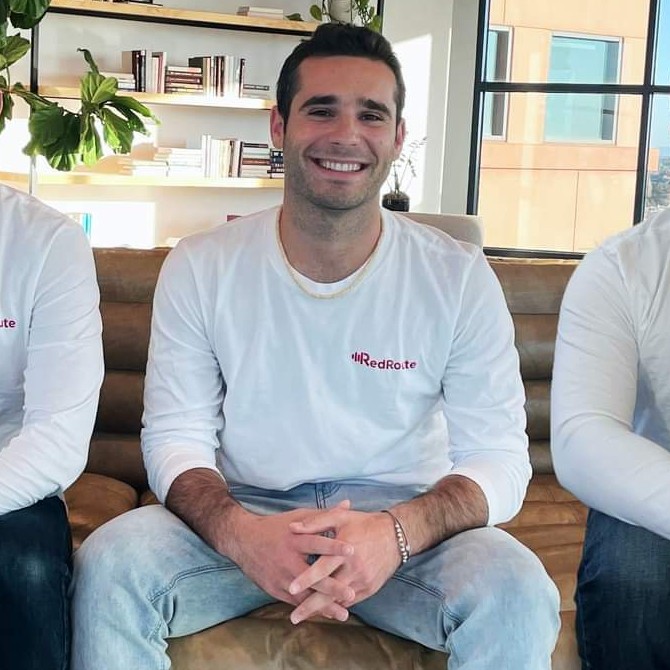
Brian Schiff
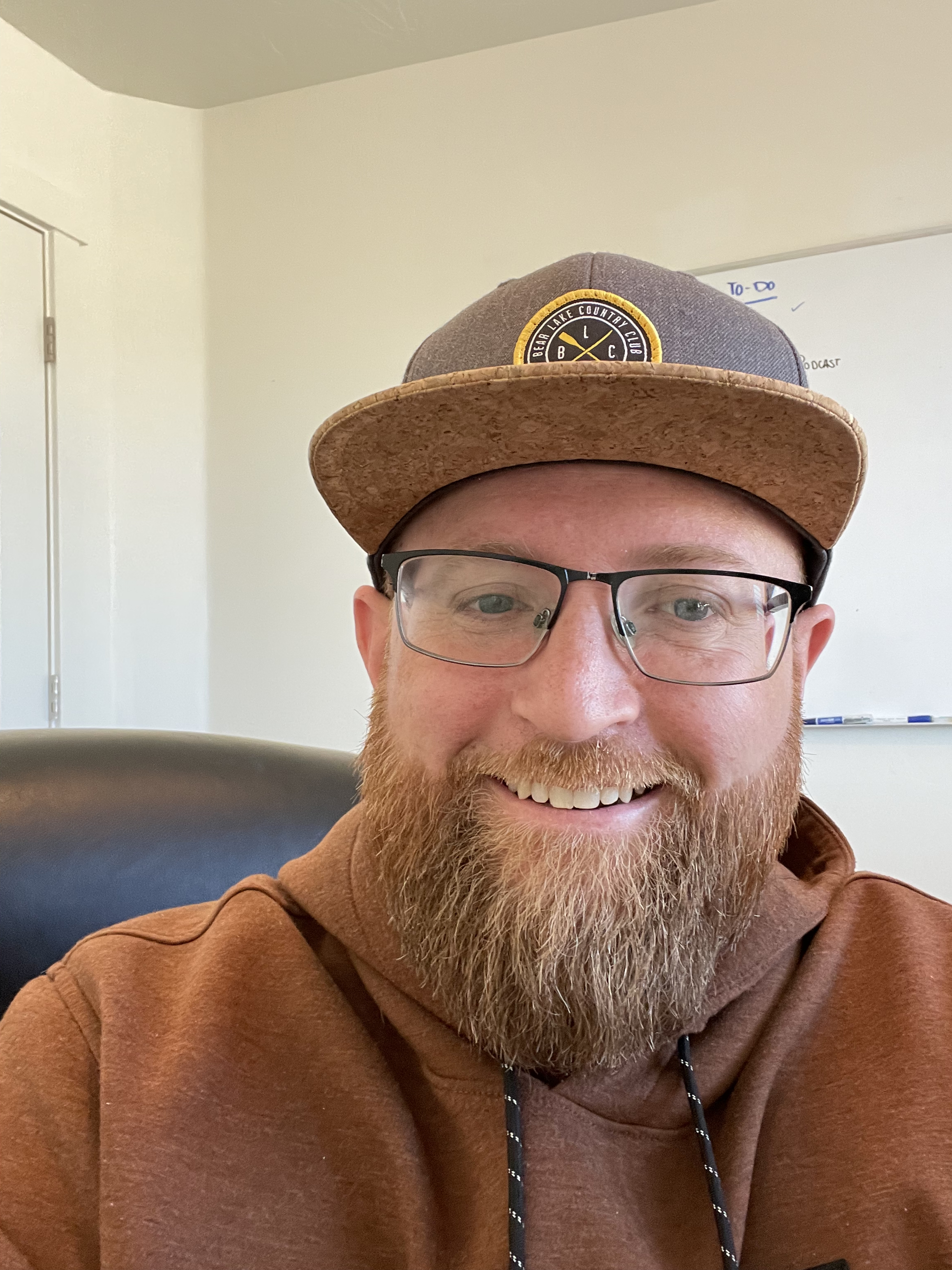
James Gilbert
Today's Guests

